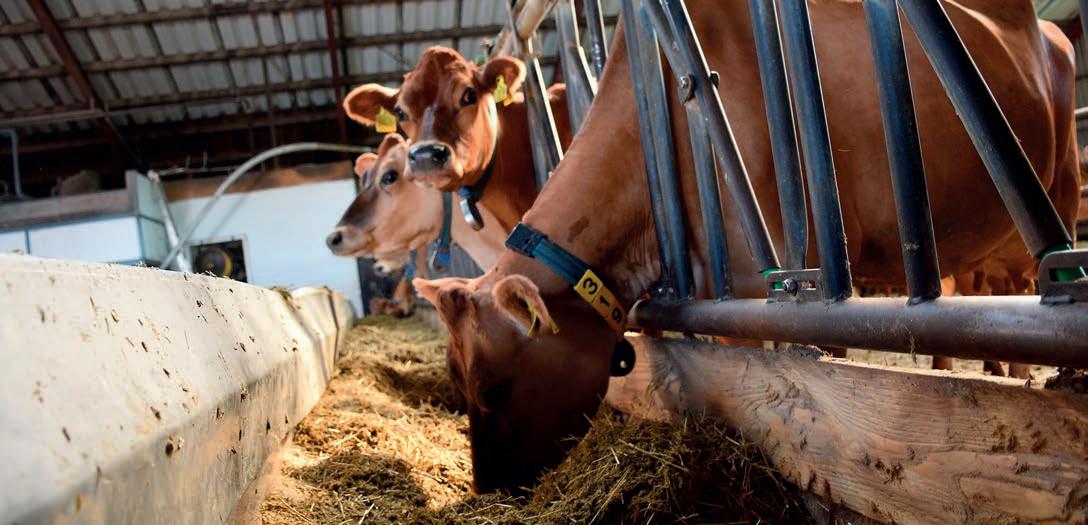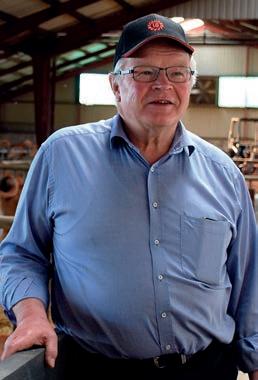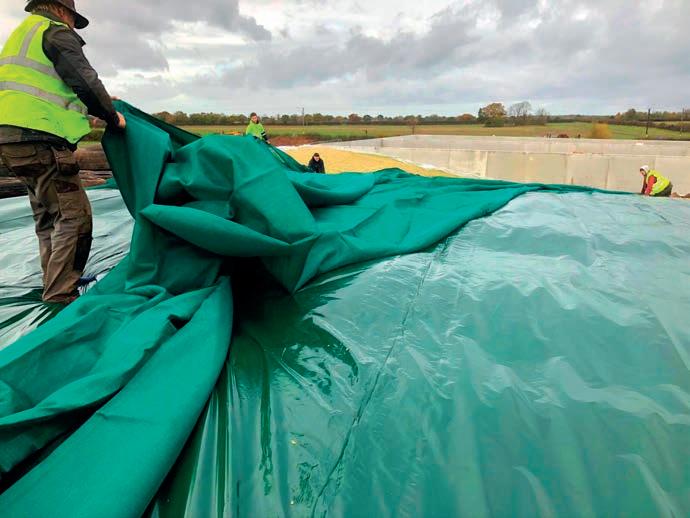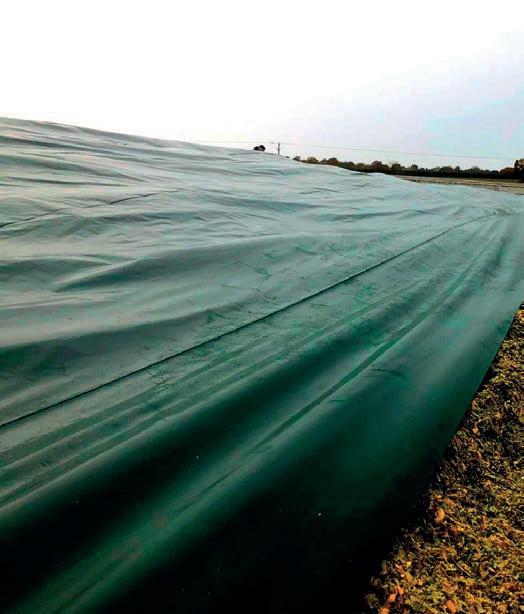
5 minute read
WORLD DAIRYING
Jersey breeder Holger Hedelund Poulsen is aiming to build a sustainable and self-sufficient business against a backdrop of a changing dairy industry. Chris McCullough finds out more.
Ejer Mollegard farm is home to 190 pedigree Jersey cows plus followers and calves.
Exporting Jersey heifers proves profitable for Danish dairy farmer
Selling pedigree Jersey heifers overseas has proven to be good business adding extra value to a Danish dairy farmer’s milk income.
Holger Hedelund Poulsen sells about 20 of his replacement Jersey heifers in-calf each year to farmers mostly in the Netherlands and Germany.
Along with his wife Karen, Holger runs 190 pedigree Jersey cows plus followers and calves at their Ejer Mollegard farm situated in Ejer Bavnehoj, the highest point in Denmark at 170 metres above sea level.
Even now at 72 years old and with no dedicated succession plan for the farm, Holger shows no signs of slowing down his milk production. In fact, he talks about continued investment into the farm and his cows.
Back in 1972 when Holger took over the farm it only had 15 hectares (37 acres) and 17 cows, but today it has expanded to 270ha (667 acres), of which 125ha (309 acres) are leased.
Back then there were about 100 dairy farms in the area, but today, in trends replicated all over the world, those dairy farm numbers have fallen to just two, albeit with increased cow numbers.
For the past 14 years, three DeLaval robots have milked the cows on Holger’s farm, with annual average yields standing at 11,000kg.
With labour availability a constant issue on Danish farms the robots have proved their worth year a er year, milking the cows an average 2.95 times per day.
Meanwhile, Holger and one worker supplies all the labour required on the farm with a parttime assistant dra ed in when necessary during the busier periods.
Breeding programme
Holger runs a speci c breeding programme on the farm which also sees him export heifers to other parts of Europe.
“I use sexed semen from Viking Genetics on the Jersey heifers to produce my replacement stock,” says Holger.
“Half of my replacement heifers, about 20, are exported for breeding each year and I keep the other half.
“We also use sexed male semen from Aberdeen-Angus bulls on some of the older cows.
“ ese calves are sold at about eight to 10 weeks old.”
He says there is ‘strong demand’ from other farmers for his heifers.
He adds: “Normally, I sell them, robot-ready, at 1.5 years old in calf for about €1,500 each to customers in e Netherlands and Germany.”
Over the years Holger has pushed to become more self-su cient in terms of his feed requirements for the herd, saving money on costs which has been a real bene t these past few months.
Since starting to farm more than 60 years ago, Holger says he has aimed to make his business more sustainable and reducing his reliance on feed and protein imports was very much part of his plan.
Today, he grows more than 80% of the feed requirements for his herd on the home farm, greatly reducing the carbon footprint in the process.
Crops such as maize, grass, barley, wheat, rye, rapeseed and fava beans are grown on the farm with around half of it sold to other farmers.
“We make four cuts of silage each year,” says Holger.
“Plus we grow a range of other crops to feed the cows. Right now we are about 80% self-su cient in terms of our feed production.
“We still have to buy in some protein but I grow about 66% of what I need in terms of that as well.
“ e rapeseed and fava beans are vital crops for us.
“Both whole and ground rapeseed and ground beans are included in the diet roughage while grain is mixed on the farm with protein, which we still need to purchase.
“On average our feed costs alone work out at 15 euro cents per kilogramme of feed.”
Holger is a big believer in utilising technology to make his farm and herd even more e cient.
Every piece of data generated by the milking robots is analysed and acted upon if anything could be improved.
“Farmers can increase their herd yields per working hour by acquiring knowledge and new technology,” he says.
“And that helps to save on costs and increase pro ts.”
Holger is also an in uential voice when it comes to the dairy industry in Denmark. When Arla launched Kaergarden (which is basically Lurpak bu er mixed with vegetable oil) Holger acknowledged the initiative but was quick to criticise the co-op for using imported soya oil rather than locally produced quality rapeseed oil. ree weeks later the dairy had taken on board his concerns and the new products were manufactured solely by locally produced oils.
HOLGER HEDELUND POULSEN Farm facts

rThe herd’s average lifetime yield is 50 tonnes over 4.5 lactations with 0.8 calvings per year rMilk is sold to Arla and at DKK5 per litre (56ppl) rThe herd is split into young cows and older cows and is then fed accordingly in the shed and at the robotic milker rOnly the dry cows and younger stock graze outdoors


all-in-one o2 barrier silage film | Block oxygen | Eliminate waste | Improve silage quality
“We used OXY SEAL™ for the first time and it’s the best silage we’ve ever made! We have no waste, its simple, easy to use and very durable.” “We now use OXY SEAL™ on all of our clamps. We find its strong, easy to use and its certainly helping us to reduce waste.”










